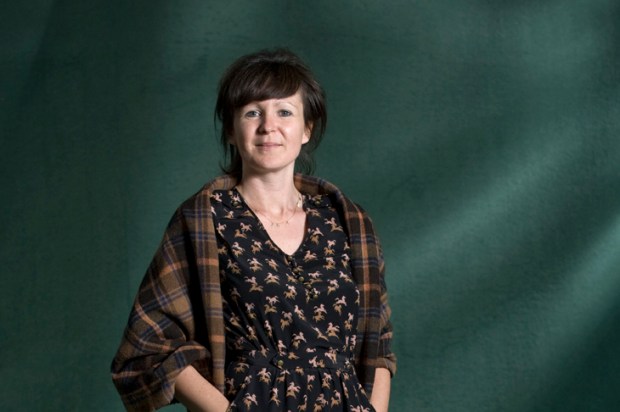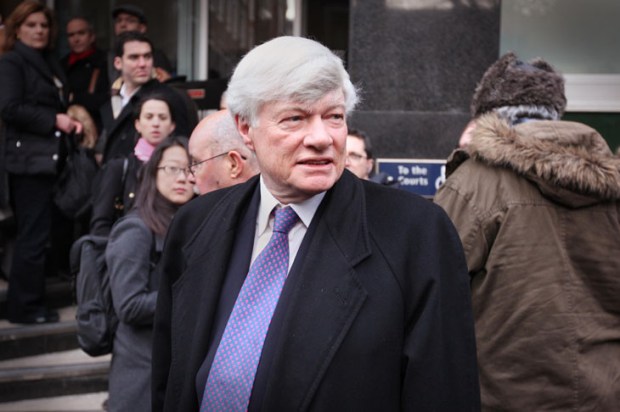The tricky term ‘Krautrock’ was first used by the British music press in the early 1970s to describe the drones and industrial kling-klang of difficult German bands such as Kraftwerk, Tangerine Dream, Popul Vuh, Faust and Can. A British fear and loathing of Germany and the Germans informed numerous New Musical Express Krautrock articles. (‘Kraftwerk: the Final Solution to the Music Problem’, or ‘Can: They Have Ways of Making You Listen’.) The term was made semi-respectable by Julian Cope, the erudite jester of English pop, in his ironically entitled book Krautrocksampler (1995), which commended the strange new music that rose from the moral and material ruins of post-Hitlerite Germany.
It is hard now to imagine how startlingly new Can must have sounded. David Niven, the matiné idol, was reportedly baffled by the ear-frazzling beeps and reverb emanating from Can at a Munich nightclub in 1970. ‘It was great,’ Niven commented afterwards, ‘but I didn’t know it was music.’ (Niven must have gone to the gig by mistake.)
From the start, Can eschewed not only the pseudo-hippie kitsch of Genesis but also the mellow denim heaven of Linda Rondstadt and the Eagles. Their abidingly great 1972 album Ege Bamyasi showed an Andy Warhol-like image of tinned Turkish food on the cover, and was very far removed from the tepid, well-mannered noodlings of Yes and Pink Floyd. Can’s signature hypnotic threnodies and percussive dancefloor grooves owed something to the American minimalists Steve Reich and Terry Riley, as well as to the atonal asperities of Karlheinz Stockhausen. In 1976, bizarrely, Can appeared on Top of the Pops in a bill alongside Cliff Richard. ‘I wonder if Can will get into the top tin?’, chirruped the presenter Noel Edmonds. (They did not.)
Formed in Cologne in 1968, Can remain hugely influential. It is enough to listen to Roxy Music’s second album, For Your Pleasure, to see how Can’s atmospheric sound clusters and loopy synth rhythms overlay Bryan Ferry’s Cole Porter-like songwriting. A decade later, John Lydon begged to be Can’s singer before founding Public Image Ltd. Radiohead have covered Can, as have the New York art rockers Sonic Youth. The late Mark E Smith of The Fall and Pete Shelley of The Buzzcocks idolised Can.
All Gates Open consists of two books. The first, by Rob Young, tells of how Can grew out of a spirit of combativeness and resistance to the ‘square’ music scene in postwar Germany known as schlager, with its Euro-kitsch crooning. The second volume, Can Kisok, by the band’s founder member and composer Irmin Schmidt, offers a collage of random memories and diary entries on art, life, death and music. Born to Nazi parents in Berlin in 1937, Schmidt was part of a generation who wanted to know about their parents’ wartime past. During the 1970s, Baader-Meinhof terrorists were able to count on a degree of sympathy among Krautrock devotees because they dared to do what Germans had failed to do when it really mattered some 30 years earlier: stand up to authority. Can’s guitarist Michael Karoli and his then girlfriend Eveline Grunwald (one of the two pin-ups on Roxy Music’s controversial Country Life album cover) were routinely stopped by police who mistook them for Andreas Baader and Ulrike Meinhof.
Young, a former Wire magazine editor, has immersed himself with tremendous zeal in unreleased Can material and bootleg recordings. The repetitive, propulsive rhythms on Can’s celebrated 1971 double album Tago Mago (still the best-selling Can album) ran counter to all known blues-rock clichés, says Young, while The Spectator’s former rock critic Duncan Fallowell argues that Can rejected arty rock posturing in favour of an egalitarian studio experimentation. Appropriately, the band’s incandescently beautiful Future Days album was dedicated to the Hollywood actress and electronics innovator Hedy Lamarr.
Schmidt is now the only surviving core member of Can. The band’s ‘tack-sharp’ drummer Jaki Liebezeit and bassist Holger Czukay both died in 2017; Karoli, the only Can founder born after the second world war, died in 2001, aged just 53. The two surviving vocalists, the African American visual artist Malcolm Mooney, and the Japanese street performer and Jehovah’s Witness Damo Suzuki (the subject of Mark E. Smith’s song ‘I am Damo Suzuki’), contribute to Young’s impressive research. It was Schmidt who steered Can into writing for films, among them ‘bleak German spaghetti westerns’ and Jerzy Skolimowski’s dark, sexy, coming-of-age movie Deep End, starring Diana Dors and Jane Asher, set in and around the municipal baths of north-east London.
The hedonism of the Swinging Sixties had by then given way to the drab reality of Harold Wilson’s first Labour government; and Can, as always, caught the moment, with an exhilarating drum-driven soundtrack that still raises the hairs on one’s neck. Krautrock? Such music defies category. (One may as well call Jimi Hendrix ‘spaderock’.) Young’s Can-opener of a book is a real treat for Can fans.
Got something to add? Join the discussion and comment below.
Get 10 issues for just $10
Subscribe to The Spectator Australia today for the next 10 magazine issues, plus full online access, for just $10.
You might disagree with half of it, but you’ll enjoy reading all of it. Try your first month for free, then just $2 a week for the remainder of your first year.














Comments
Don't miss out
Join the conversation with other Spectator Australia readers. Subscribe to leave a comment.
SUBSCRIBEAlready a subscriber? Log in